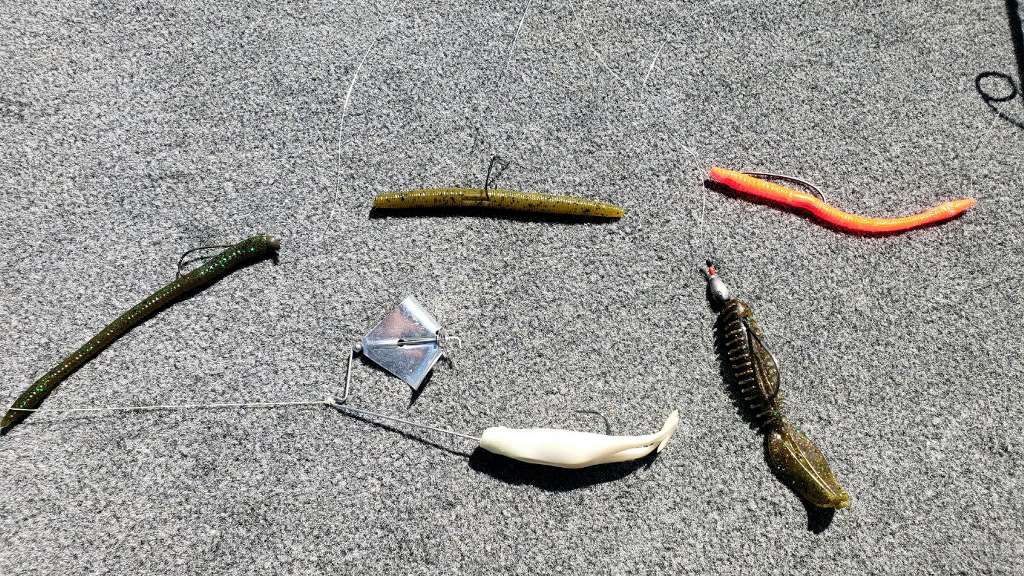
Brandon Cobb may only be a sophomore on the Bassmaster Elite Series in 2020, but he certainly isn’t lacking the experience to compete at the top level of the sport. Cobb amassed more than $400,000 in earnings while fishing with FLW. During his first season on the Elites in 2019, he pocketed more than $260,000 including two victories – Lake Hartwell and Lake Fork.
Fishing shallow during the spawn and postspawn is one of Cobb’s favorite things, and it is no accident he had his two best events of the year doing just that. Cobb keeps it simple with his baits and employs a mix of finesse and power fishing techniques to be successful in the spring.
1. Green Fish Tackle Casey’s Clean Up Shaky Head
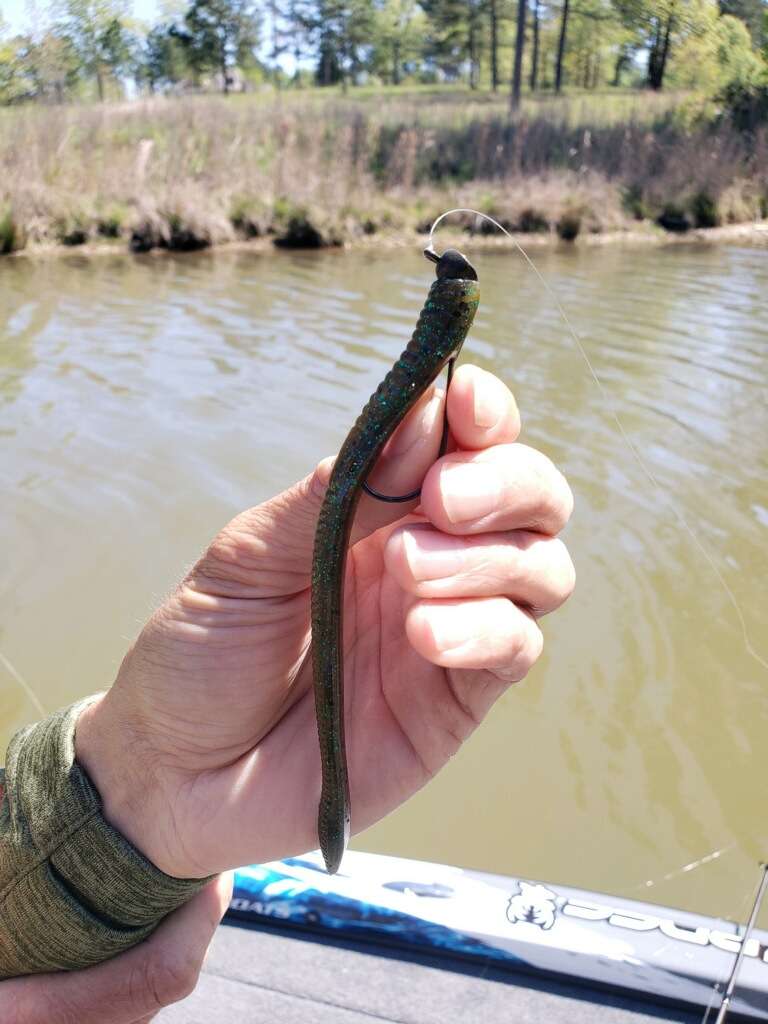
Cobb reaches for a 1/8-ounce ball-head Green Fish Tackle because of the increased hook-up ratio over other shaky heads – specifically spring lock style baits. He prefers the green pumpkin painted head and pairs it with a Zoom Trick Worm of similar color. Cobb is typically using a shaky head when he can see the fish on a bed or cruising shallow. The shaky head is Cobb’s go-to bait when fishing in less than 4 feet of water.
Rod: Ark Invoker Pro Series 6-foot, 10-inch Medium Action
Reel: Abu Garcia Revo X Spinning Reel Size 30
Line: 10-pound Yo-Yuri Superbraid with a 10-pound Yo-Yuri Top Knot Fluorocarbon Leader
Cobb’s Take: “The shaky head is the perfect sight-fishing bait because of its subtle profile. It very rairly will spook a finicky fish and allows me to easily change baits.”
2. Zoom Fluke Stick or Zoom Slinky on a wacky rig
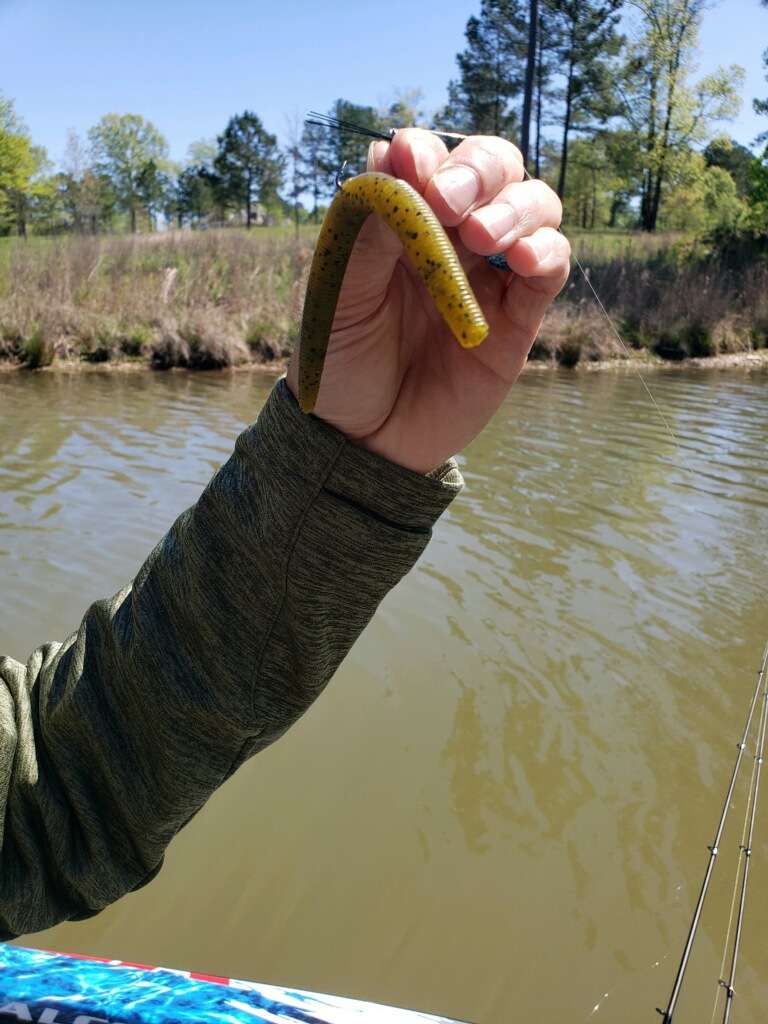
Another finesse technique that Cobb has plenty of confidence in is a simple wacky rig set up. The bait of choice for this are two worms in the Zoom lineup – the Fluke Stick and the Slinky – both factoring into his 2019 Elite win at Lake Hartwell. He uses the wacky rig as more of a search tool to target specific cover. It is not necessarily for sight fishing, but he throws it at anything that looks like it could have a fish on it – specifically the “weird stuff.” The “weird stuff” is basically anything he sees while scanning down a spawning bank that might look like a bed or be a spot where a fish is sitting – Cobb makes a few casts.
Rod: Ark Invoker Pro Series 6-10 Medium Action
Reel: Abu Garcia Revo X Spinning Reel Size 30
Line: 10-pound Yo-Yuri Superbraid with a 10-pound Yo-Yuri Top Knot Fluorocarbon Leader
Cobb’s Take: “The wacky rig is my go-to for blind casting to targets because of its slow fall rate. The slow fall approach can often trigger the larger females to bite before the males.”
3. Zoom Z-Craw on a Texas rig
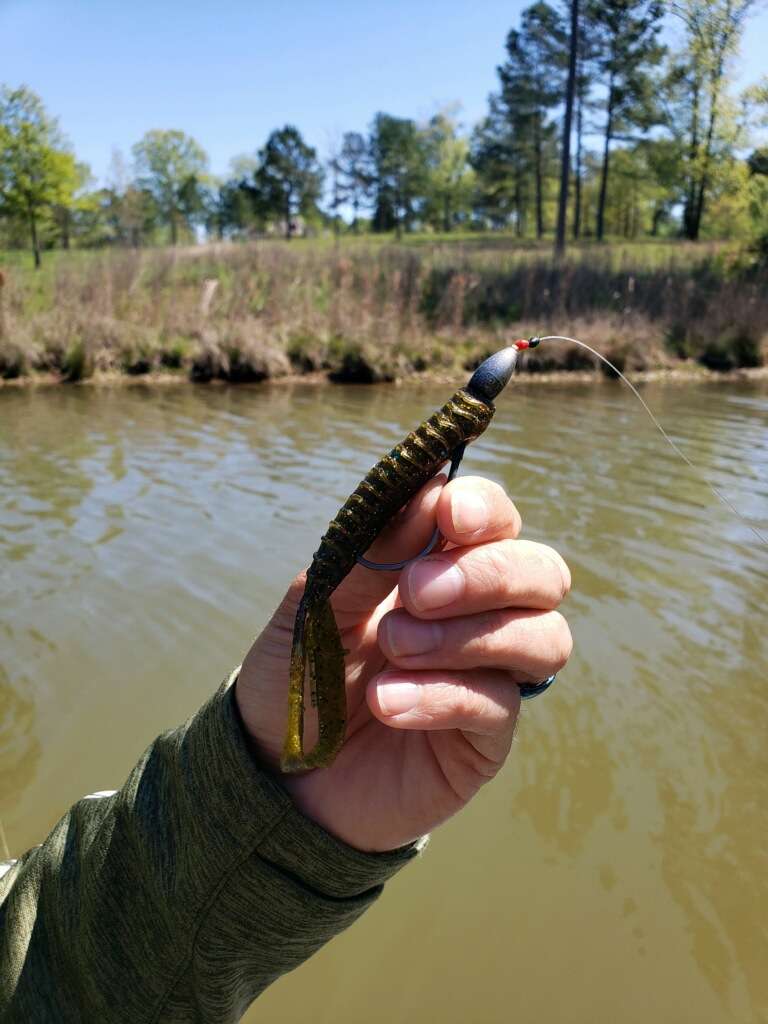
For lakes that have larger fish such as Texas’ Lake Fork, Cobb likes to know he has the power to handle the extra weight. Rigged with a 3/8-ounce weight and a Berkley Fusion Hook – size 4/0 or 5/0 – the Texas rig setup is what Cobb reaches for. The Zoom Z-Craw is Cobb’s favorite bait for the task as he feels like it is the best imitator on the market – something he has a lot of confidence in. Cobb likes to throw the Z-Craw at big fish and says it can sometimes be intimidating to smaller class fish.
Rod: Ark Invoker Pro Series 7-3 Mag Medium-Heavy Action
Reel: Abu Garcia Revo STX Casting Reel in 7.3:1 Ratio
Line: 20-pound Yo-Yuri Top Knot Fluorocarbon Leader
Cobb’s Take: “The Texas rigged Z-Craw is perfect for larger fish. The big hook and larger strength line give me the confidence to manhandle any size bass.”
4. Zoom Trick Worm rigged weightless
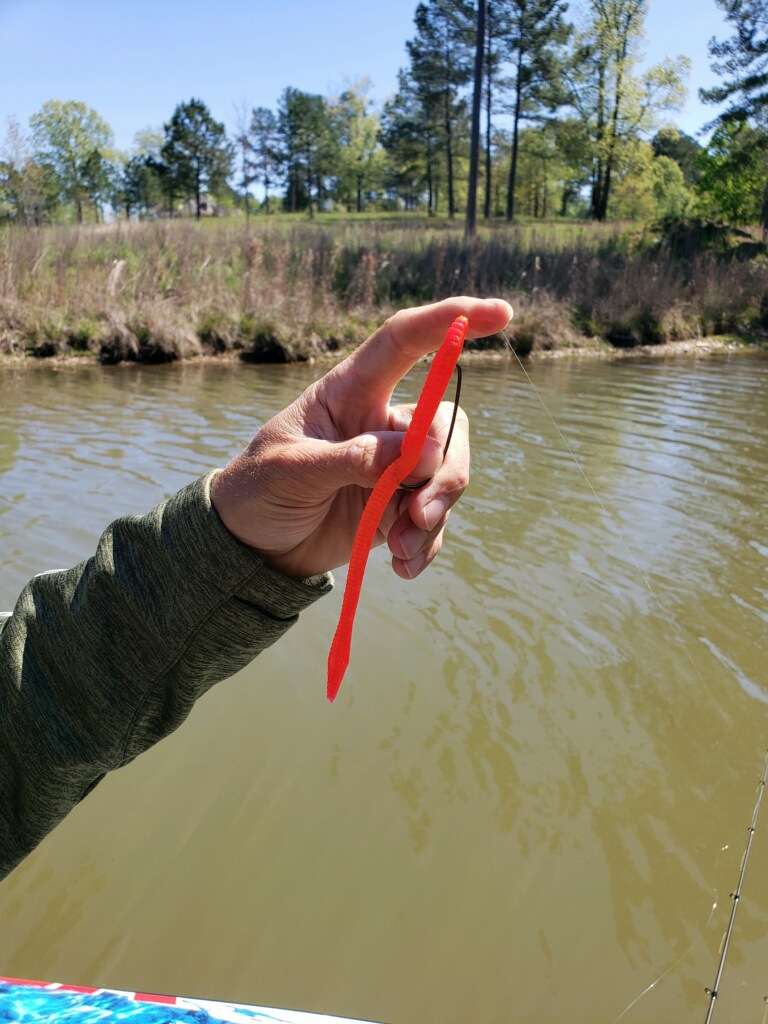
Another finesse technique that Cobb will go to is a floating worm. A Zoom Trick Worm gets it done when rigged on a 5/0 round bend worm hook, the catch ratio is much higher. Cobb prefers bright colors and will cast the bait a long way trying to entice a bite from a less-pressured fish. The best chance to catch the female is getting a bait above her head from a long distance. To achieve a longer cast, he switches to a size 40 Revo X reel, which both gives him the longer casting distance but also the ability to get a good hook set. When the fish bites, there is usually a bow in the line and the bigger reel allows him to make up that slack with a couple turns of the reel.
Rod: Ark Invoker Pro Series 7-1 Medium Action
Reel: Abu Garcia Revo X Spinning Reel Size 40
Line: 15-pound Yo-Yuri Super Braid with a 12-pound Top Knot Fluorocarbon Leader
Cobb’s Take: “The floating worm was one of the most popular baits but has recently faded in popularity. It is still one of the best ways to target larger females before they see you.”
5. Greenfish Tackle Toad Toter Buzzbait
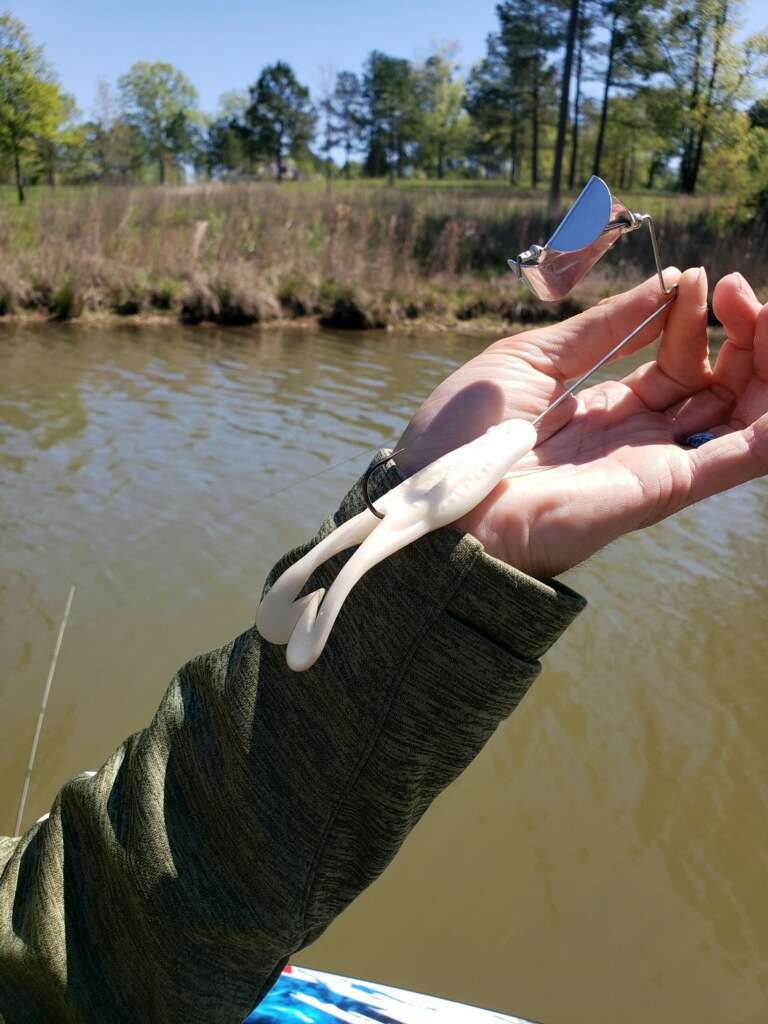
When the water gets stained and Cobb loses the ability to see beds, there is one bait that he grabs. The Greenfish Tackle Toad Toter is 3/8-ounce and equipped with a 4/0 Mustad hook. It was designed specifically for use with soft plastics like a Zoom Horny Toad and is the perfect bait to cover water and entice bites. Cobbs keeps his color selection simple and opts for only white or black. There is no specific reason which one will work on which days, but Cobb uses both until he gets a feel for the day.
Rod: Ark Prototype 7-1 Heavy Action
Reel: Abu Garcia Revo STX Casting Reel in 7.3:1 Ratio
Line: 50-pound Yo-Yuri Super Braid
Cobb’s Take: “A buzzbait can trigger not only spawning females, but also prespawn fish just moving up. It is a little more aggressive than the floating worm, making it the best in stained to muddy water.”
Techniques
Cobb has his tried-and-true baits for catching fish during the spawn and postspawn, but it’s how he applies them that makes his approach special. His first approach in all cases is to try to catch them before you see them.
“The wacky rig and floating worm are great for this technique. I can be looking for fish while hitting high percentage areas down the bank in front of me. If you can get a bait in the area of a bed, the slow sinking baits will most always entice the female to bite first. If she can’t see you, and that bait comes down from above her in shallow water, she is most likely going to eat it.”
He believes that, any bed fish that will come back to the bed after swimming off, with your bait present in the bed, is catchable. A lot of times they will swim off for a short time, but when they return, if they see your bait and leave again, they probably are not worth the time: “I don’t mess with those very long.”
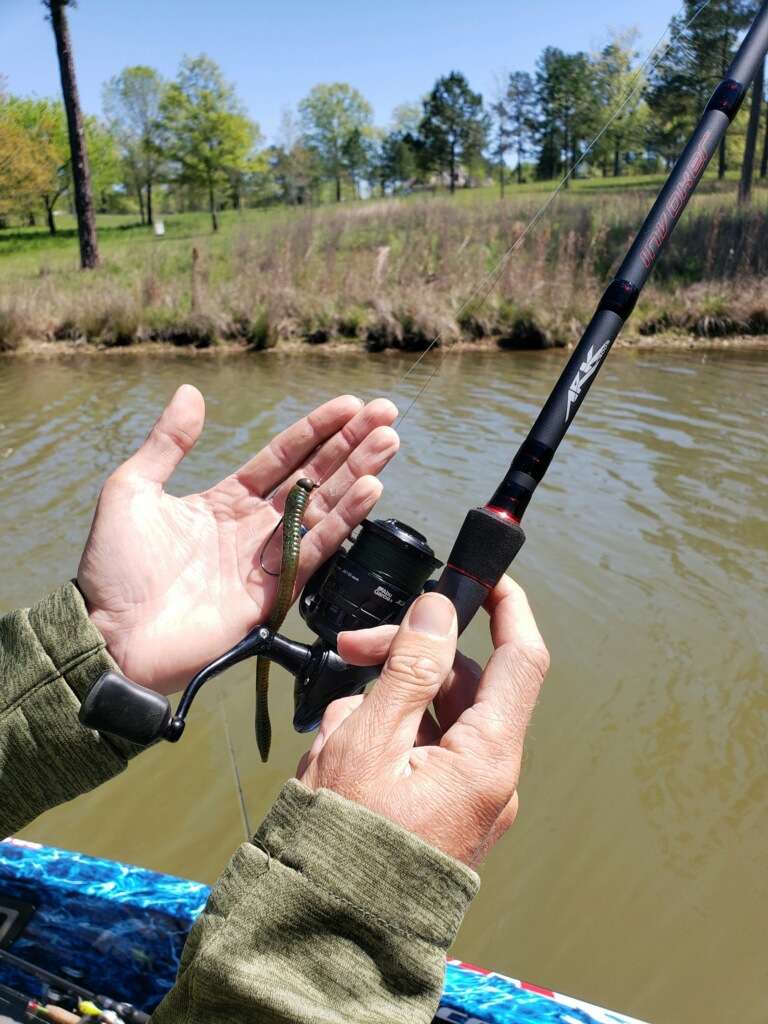
Another thing Cobb will do is to rotate through baits until he figures out what makes the fish mad. Some fish like it subtle, and some like it more aggressive. It’s a one-two punch and understanding each fish helps determine the best way to catch the fish.
“Some fish are shakers – shake the bait and they swim over and look at it. Those are the easier ones to catch. Some fish you have to be aggressive – they don’t care about the bait, but they stay locked on the bed. Cast beyond the target and swim the bait into the bed. The key is to try and hit the fish to make them mad. You have to be careful not to snag the fish – the goal is not to foul hook them – just bump the fish enough so they get irritated and eat it.
Cobb warns to never hit a fish in the tail as it scares them and they will leave the bed and not return. Do not lead with that approach. If the fish seems catchable, employ the other methods before trying that. It is better to try and shake it in place and let them come to it.
Catching both
For pairs of fish, Cobb has some in-depth information on how to approach fishing for the male and female. Once you locate a bed, if you stumble on a pair of fish, you must understand how the female reacts to the bait.
“If the female is showing interest in your bait with the male present, never catch the male first. Do what you need to shake him off or switch to a bigger bait that he can’t get. Likewise, If the female is sitting off bed or doesn’t show interest in the bait, try to catch the male off the bed. Either put him in the livewell if he is legal or release him away from the area.
The next step Cobb stresses is the absolute most important, and he notes this is where most anglers make a mistake. Once you catch the male, you have to get a bait back to the bed as quickly as possible.
“When you catch the male, the female will either leave for good, or go to the bed. Once she goes to the bed, you have to get a bait on the bed instantly, and she will usually bite. Where most people mess up is, they take too long dealing with the male and the female will leave. There is a very short window when the buck leaves, she will get mad and investigate. Once she realizes what’s happened, she may be gone and won’t come back.





